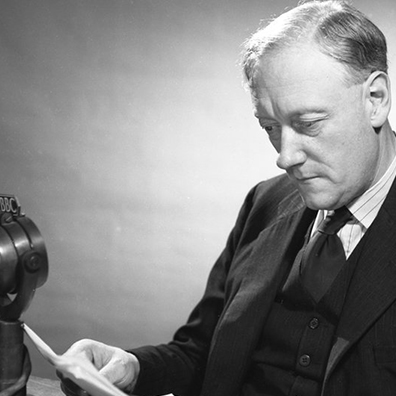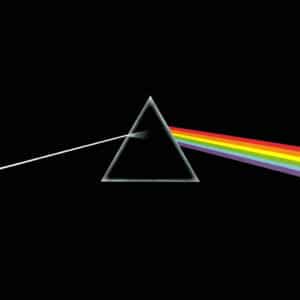
Mission Statements – Spare us the misery please!

Length: 1200 words/5 minutes
We all like to occasionally raise our fists against big bad corporations. We certainly have good right to seeing as how they frustrate us with their dead-end phone menus, wait times, and complex billing statements. Yet I think most of us grudgingly appreciate the fine line between business success and failure.
Walter
Businesses fail for a lot of reasons, but for
Apart from those instances of clear executive avarice, I am slow to criticize corporate decision making. The competition has always been ruthless, brutal, and relentless, but today it all happens at the speed of electrons as they move across the internet. The big retailers who were blindsided by
But… and this is a big but… if the business world is so ruthless and the competition for customers so great, then why in the blazes do companies spend so much time, money, and effort producing the most annoying tosh known to man—mission and vision statements? These are those vapid bleatings that are meant to convince us how warm a company’s heart really is and how they dedicate their every effort to our well-being. Not only is the corporate world saddled with these pests, but now every governmental agency from the local driver’s license bureau to the Pentagon is awash in this verbal morass—it is a hall of mirrors from which there is no escape.
It is hard to describe complex businesses in just a few sentences, but many companies, apart from those who are trying to hide something from regulators or tax officials, don’t even try to hew to Einstein’s dictum of making everything as simple as possible but no simpler. At least that would be a good start.
Why then do I hedge so much venom against these odious fillips of corporate speak? Can’t I just ignore them? Well, that is really hard to do as they are both unavoidable and intrusive. They are confusing, counterproductive, and in the end serve as sad attempts to replace solid and enlightened leadership.

A friend of mine who is a graduate of an elite business school told me that when he talks to would-be entrepreneurs he finds that many of them cannot sketch out in the mere roughest of terms where they hope their idea to go.
Worse, this lack of true goal-setting and leadership leaves both employees and customers adrift. Most workers laboring at the coal face already know what they are supposed to be doing so the empty language of the mission statement is meaningless to them. They are right to ask how this nonsense serves to help them work better, produce more, and make customers happier.
Think for a moment if Sir Winston Churchill, the great orator of the English language, ran across the Our Mission and Our Values section on the Starbucks homepage. To be fair, as of this writing in August 2018 the mission statement has remained the same, but they seemed to have done away with the “Our Values” section. Thus I admit that I am drawing on an older example for illustration purposes.
Our Mission: To inspire and nurture the human spirit – one person, one cup and one neighborhood at a time
Our Values: With our partners, our coffee and our customers at our core, we live these values
Creating a culture of warmth and belonging, where everyone is welcome
- Acting with courage, challenging the status quo and finding new ways to grow our company and each other
- Being present, connecting with transparency, dignity
and respect - Delivering our very best in all we do, holding ourselves accountable for the results.
- We are a performance driver through the lens of humanity.
Wow. My head hurts. Apart from not at all understanding their use of commas in their Our Mission section, I don’t have the foggiest idea what connecting with transparency or the lens of humanity” means under Our Values.
Plus, how is anyone supposed to gain these saintly virtues? By reading about them? What happened to the
Business executives, governmental agencies, schools
My all-time favorite business essay is Kevin Starr’s explanation of why a mission statement should never be longer than 8 words. I know that I have mentioned this in previous posts, but if you have not yet read this gem it can be found here: Starr in Stanford
To be fair there are some absolutely brilliant examples out there to serve as a lesson for us. Think of FedEx’s The World on Time. What could be simpler yet clearer? It perfectly aligns both customer and employee thinking on getting the package there on time.
Another great example is the British
Before the Duke of Wellington met Napoleon’s forces at the climactic battle of Waterloo, he had already fought them in Spain and Portugal where he studied the French tactics and strategy. He used those lessons to prepare his men for that singular moment when Napoleon would either remain master of all Europe or be defeated forever. Compare Wellington’s command below to the mission and value statements from Starbucks. While Starbucks is wildly successful and I have nothing against them other than not being able to afford a $5 cup of Joe, I think it gives you an idea of whom you would rather follow into battle.
Wellington’s command to the Guards Regiment at the battle of Waterloo: Up, Guards, and at them again!
![]()







Most mission statements I’ve read are replete with meaningless corporate buzzwords. I like Nelson’s succinct mission statement…goal + how to accomplish that goal!
Excellent point Claudine. As an average gent worker bee I not only appreciate that clarity from the leadership, but I need it. Anything else starts to sound like Charlie Brown’s teacher: Blah, blah, blah.
I searched for ‘mission statement generator’. Had fun auto generating one that sounded good but was meaningless. Wonder if the interns creating the mission statements know about the generator?
This takes me back down the MBO/Quality/Blue Book rabbit holes that crippled senior USAF leadership for at least one or two postwar generations. Never remember anyone associating Curtis LeMay, Robin Olds, Claire Chennault or Jimmy Doolittle with fancy mission statements. Certainly not a Chesty Puller or Smedley Butler!!
Very well said Bill!! Can you even imagine the searing looks you would have received if you had asked any of the gents that you mentioned what their command’s “Mission Statement” was? You would have been drummed out the of the office on account of rank stupidity. Fly, fight, and win seems to do it just fine.
To fight and win the nations wars.
The first line of the US Army mission statement.
Phil that is a great line. I looked this up at https://army.mil/info/organization and found the entire mission statement to not be too bad. That first sentence encapsulates it all for them. They do follow it up however with:
“by providing prompt, sustained land dominance across the full range of military operations and spectrum of conflict in support of combatant commanders. We do this by:
Executing Title 10 and Title 32 United States Code directives, to include organizing, equipping, and training forces for the conduct of prompt and sustained combat operations on land.
Accomplishing missions assigned by the President, Secretary of Defense and combatant commanders, and Transforming for the future.”
They had this brilliant first line and then then drift into “transforming for the future bit” and the military’s ever present buzzwords of full spectrum dominance…etc. All the services do this. Overall though I don’t want to sound as if I am being too picky. I read a LOT of mission statements in prepping for this post and some of them are painful–truly painful. This one gets it right in the first sentence and so I can forgive the fluff thereafter. Fly, fight, win!
The question of mission statements, for me, begins with defining just what a mission statement is. I’ve had a look at this page http://www.alessiobresciani.com/foresight-strategy/51-mission-statement-examples-from-the-worlds-best-companies/51/ and I see a mix of mission statements, vision statements, and just plain silliness (see Sony, for an instance of the last).
My view is that a mission statement is defined as a statement that tells us what the organization was created to do. Likely my friend Neal might put tongue in cheek at say that all companies’ mission statements should read “Make money.” Well, yes. So we fall back to what is it we were created to do in order to make money?
Assuming the link above reveals actual mission statements as it purports, I find the one for PayPal to be terrific; “To build the Web’s most convenient, secure, cost-effective payment solution.” Much like the US Army’s “Commander’s Intent” statement, this mission statement gives us a direction in which to move, absent further guidance. And to give credit where due, look at the UN’s mission statement from the link: “The maintenance of international peace and security.” I personally find this laughable in the measure of the UN’s effectiveness, but it is a superb mission statement.
As Neal does, I see problems with many so-called mission statements, and I believe from experience that many of these problems arise from two process flaws. The first process flaw is that the mission statement is muddied by including the why we do it, or even cluttered with company values. Again from the link, the purported Phillips mission statement: “Improving people’s lives through meaningful innovation.” Did the CD format improve our lives? Arguably, I suppose. But this is a bit presumptuous it seems to me. It is too squishy for a mission statement, including leaving unanswered the notion of who decides what is meaningful.
The second process flaw, as I see it from experience, is this: mission statements are often developed by committees of people as a team building exercise. In my opinion this environment limits the precision of the statement due to its necessary compromising inclusiveness requirements so as not to break the team just built. Instead, we break the statement.
As previously implied, it appears companies want to jam into mission statements elements of worldview, social responsibility, and corporate values. These things are best left outside the mission statement and, if needed, included in a total statement of mission, purpose, and values.
I am a therapist. I have no committee. I developed a mission statement for my self. “To assist people in the discovery of the true source of their distress and to help them adapt or cope with that source.” This is useful to me because it allows me to evaluate whether I am straying from counseling into the field of coaching. Coaching is not the business I am in.
Thanks for the great topic, Neal!
Thank you for the link and your thoughts Fitz. You tease out a point that I should have been more careful with. I am afraid that I sounded as if I was advocating swinging the pendulum full to the other side. “Make Money” for a business. “Run or Swim the fastest” for an athlete. “Make the best music” for a musician and so forth.
What I was trying to advocate was for some rigor and focus to waft away those clouds of obfuscation that hover over all too many mission statements. While a health care business, for example, does indeed want to make money, maybe “Provide timely, efficient, and reasonable cost health care” might work. Or “Augment music education with on-line tutors.” Sure the underlying goals are there, but hit hard with the mission statement to tell exactly what you are going to do. Blake Jessen just emailed me to remind me that United Airlines statement is “To be the worldwide airline of choice.” Make money sure, but to do so be doing it this way.
You make an excellent point about pulling out some of those elements that have migrated into the mission statements and put them elsewhere—the “how we will do this” or value section or whatever you might need. I did not mean to sound that I totally discounted this. For example the Army was explaining that they have Title 10 requirements to organize, train, and equip the forces along with other requirements. The Air Force has Core Competencies. These are all worthy to explain, just not in the mission statement.
Either way, you reinforce the thought that it is clarity that counts. From the Colonel to the Private, from the CEO to the intern. To use corporate-speak this clarity can wonderfully align the interest of the management, worker, customers, and shareholders. Getting everyone to march in a certain direction so to speak.
Again, thank you for your comment.
Btw…I need to check on Starbucks as they may have updated their m.s.
I feel for the companies that attempt to crystallize sentiments into succinct prose. It takes time, and no CEO ever has received a larger grant of options for writing less. We bonus the bloviators.
one example of a mission statement par excellence:
“To boldly go where no man has ever gone before”.
Indeed! I forgot about that one.